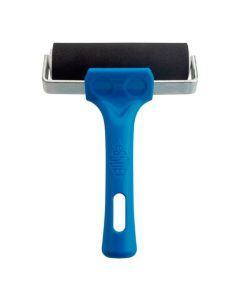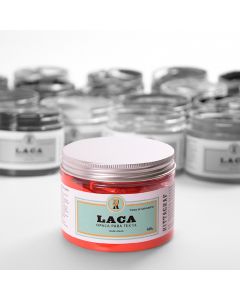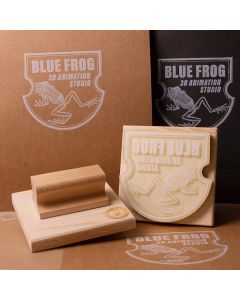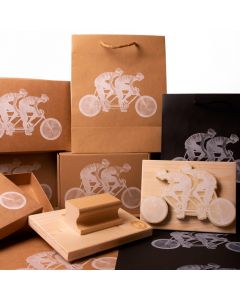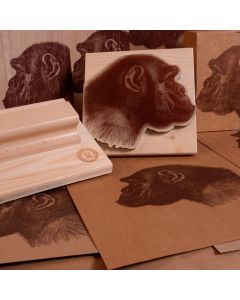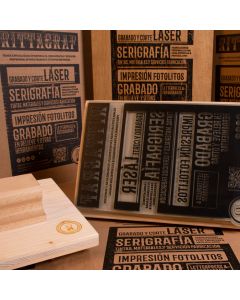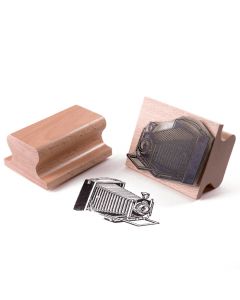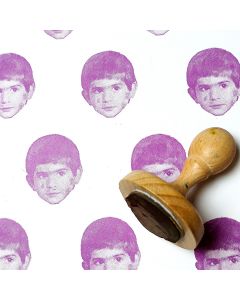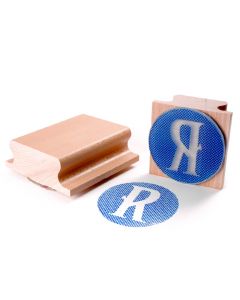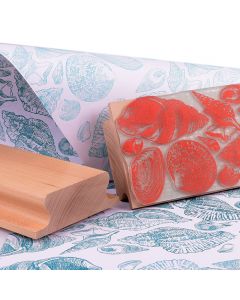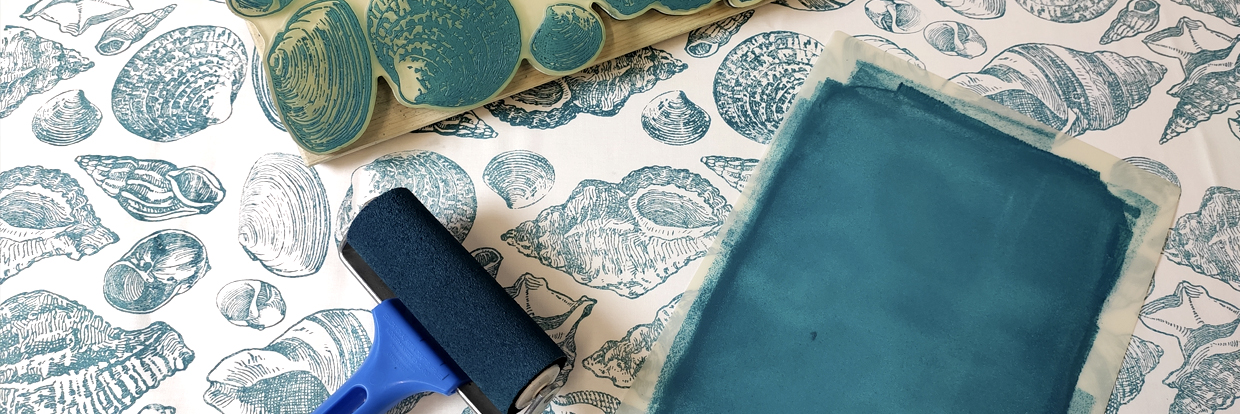
® Carlos Alguacil para Rittagraf
Printing on Fabric: Screen Printing or Stamps?
Both screen printing and the use of custom stamps are ideal options for printing on fabric or any type of garment. While screen printing is perfect for long print runs due to its cost-effectiveness, speed, and durability, stamps offer a practical and versatile solution. With a stamp, we can easily apply the ink and stamp instantly without the need for extensive infrastructure or technical knowledge.
Printing stamps on fabric has numerous applications. For instance, many of our clients use rubber stamps to mark their logos or even label the back of t-shirts with size or features. Stamps are highly manageable, making them ideal for areas with folds or seams, avoiding potential issues of ink excess that can occur with screen printing.
But let's not limit ourselves to small-scale or secondary details when discussing stamps. If we seek inspiration, we just need to look at the master printers of India, who have taken the art of stamps to astonishing dimensions, printing large hand-carved wooden blocks.
Versatility of Using Stamps for Fabric Printing
Stamps are an ideal option for creating patterns on large fabric surfaces, either through repetition or using modular systems. Their fresh and intuitive approach offers an alternative to screen printing, where the pattern structure is predefined. Here, we're not aiming for the perfection and rigidity of screen printing; instead, we seek the irregularity and creative freedom that stamps provide. The challenge lies in finding inks that offer the highest degree of definition and detail possible, knowing that stamps are simply stamps and that miracles, my friends, only happen in Lourdes.
In general, textile ink pads for stamps available on the market, like those from the Versacraft series (Tsukineko), satisfactorily fulfill this function, especially when applied to smooth and light-colored fabrics. However, their ability to cover dark surfaces is limited. While this feature can be intriguing when seeking subtle stamping with coordinated tones, it can become an issue when greater opacity is needed.
Another drawback of stamp pads and stampers is their size. When working with large stamps, the inking process using pads becomes slower.
It's true that there are textile inks that can be applied with rubber rollers, such as the Fabric Block Printing Ink series created by Speedball Art. However, in this post, we will focus on the use of textile screen printing inks, both lacquer textile inks (opaque) and acramine textile inks (transparent), for stamp printing.
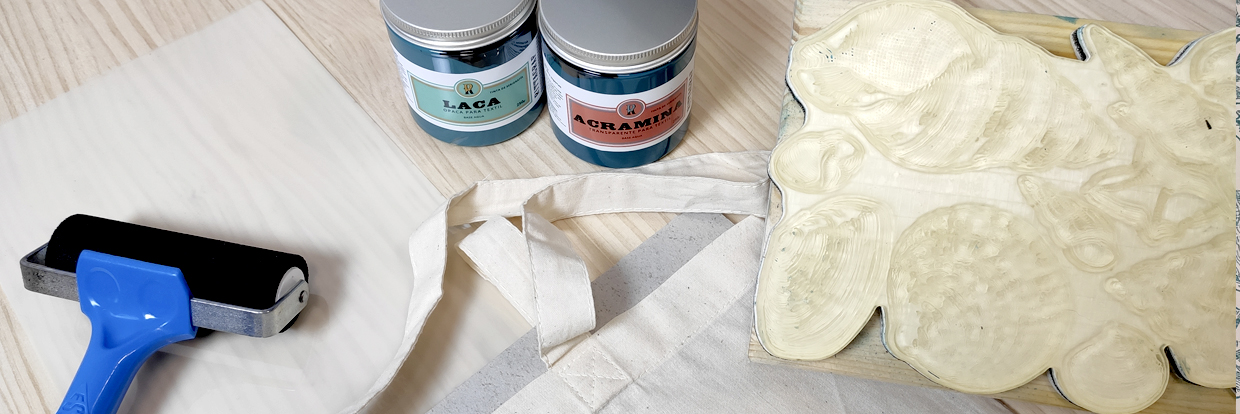

Stamping a Textile Stamp with Screen Printing Ink Step by Step
Step 1: Choose the Roller and Textile Ink:
To apply screen printing ink to stamps, we'll need to use an engraving roller. We can use a rubber roller like the ones we would use for inking linoleum, woodcuts, offset, or lithography plates.
The flow of textile screen printing inks varies depending on the series. Lacquer inks are thicker and will have more adherence to the roller, while acramine inks are more fluid and can be a bit slippery. Therefore, we recommend using a dense foam roller. This type of spongy roller holds textile ink very well and prevents the screen printing ink from slipping on the inkwell. Also, within each series, colors show differences in density and flow that can affect the opacity and usability of the ink applied with a roller; it's important to keep this in mind.
None of the other water-based inks tested so far can compete with the opacity of lacquers and the intensity of acramines. This type of fabric inks is eco-friendly, very affordable, and resistant to washing.
Step 2: Spread and Create an Ink Field
Using a spatula, spread the screen printing ink on a non-porous surface such as marble, glass, or plastic, generating one or multiple even strips. Then, with the foam or rubber roller, spread the ink by rolling the roller in various directions until achieving a thin and uniform film. It's important not to have an excess of ink on the roller, or the applied layers won't be even. In this case, plastic serves as the inkwell; it's easy to clean and convenient for transportation and storage.
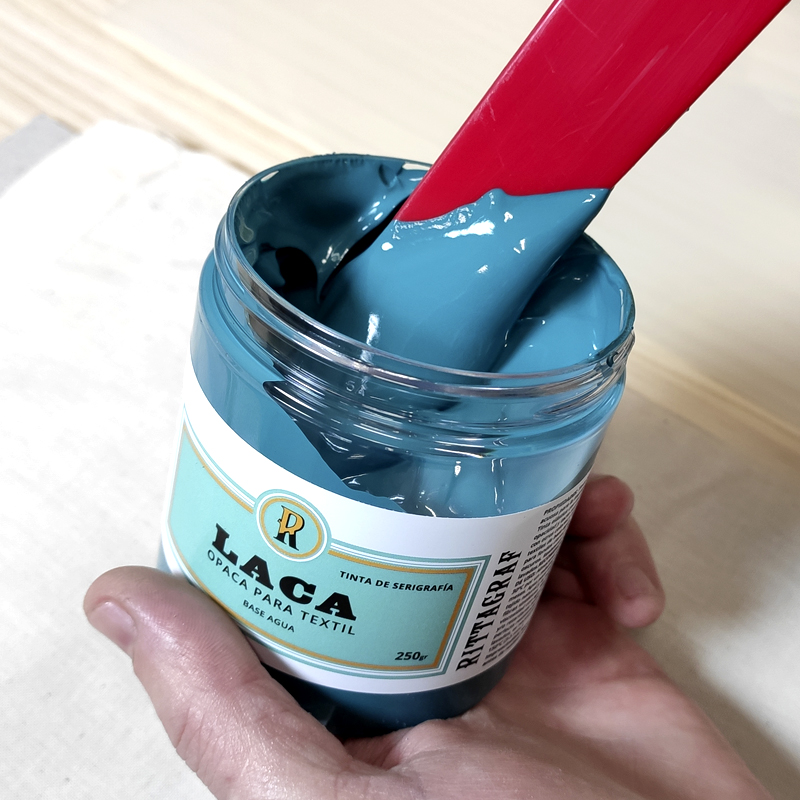

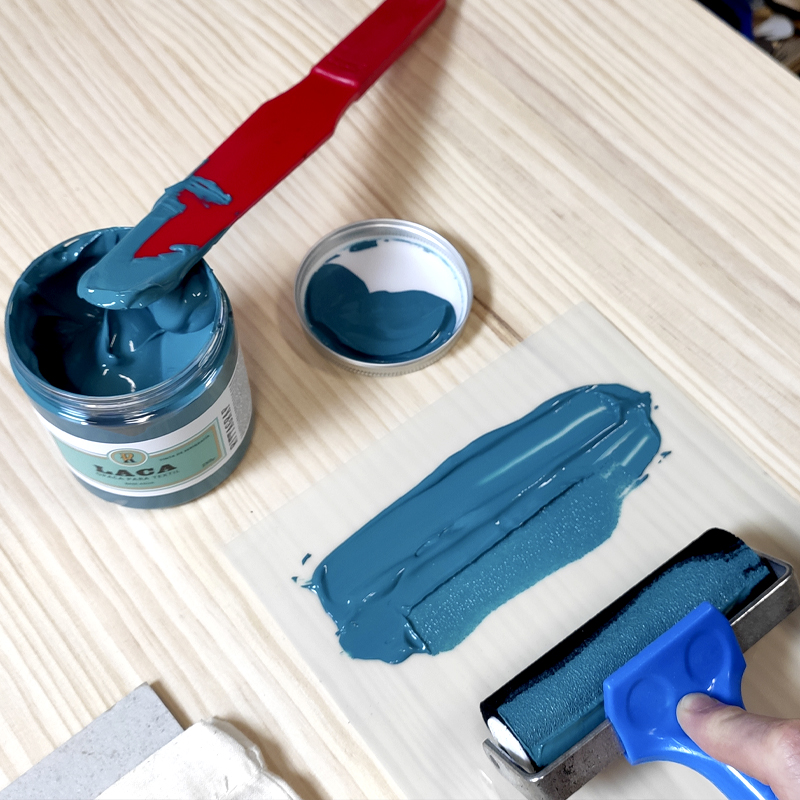

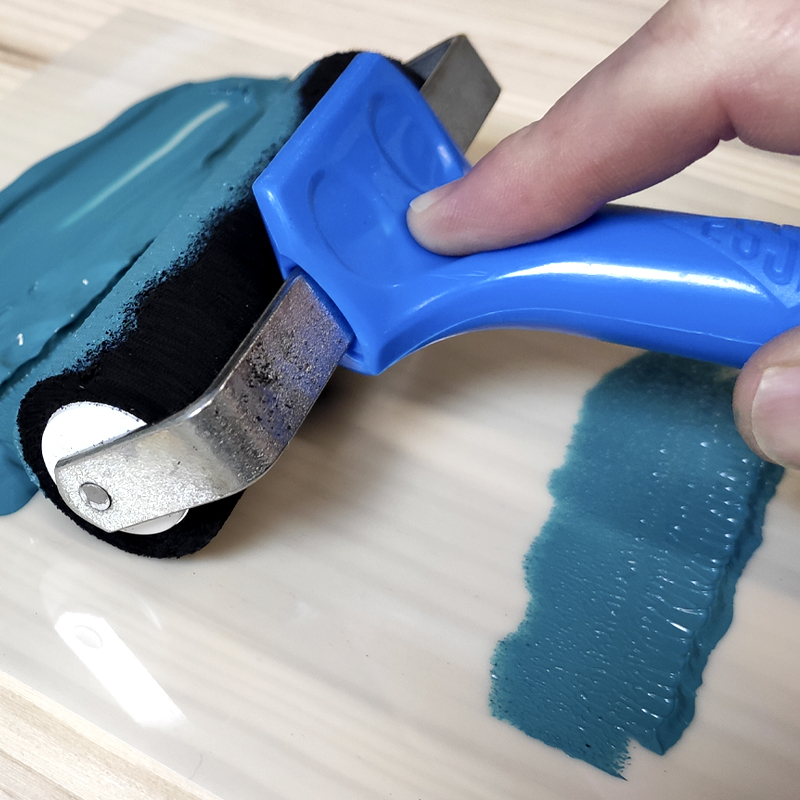

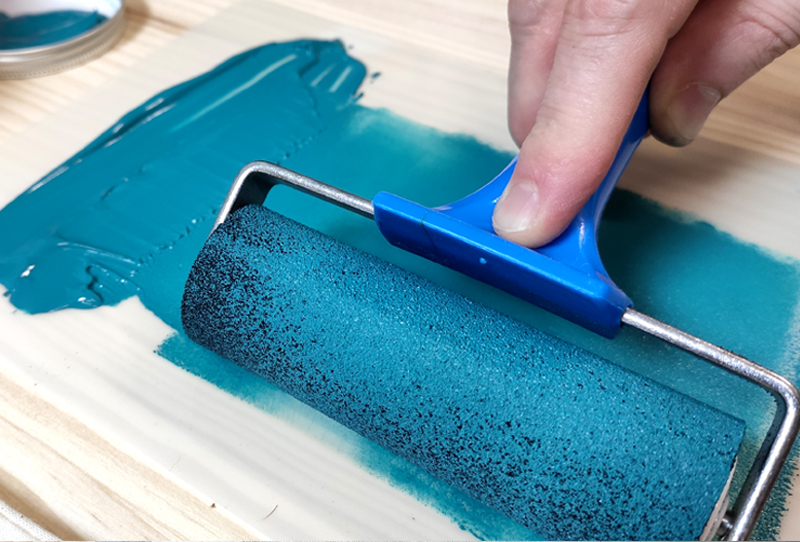

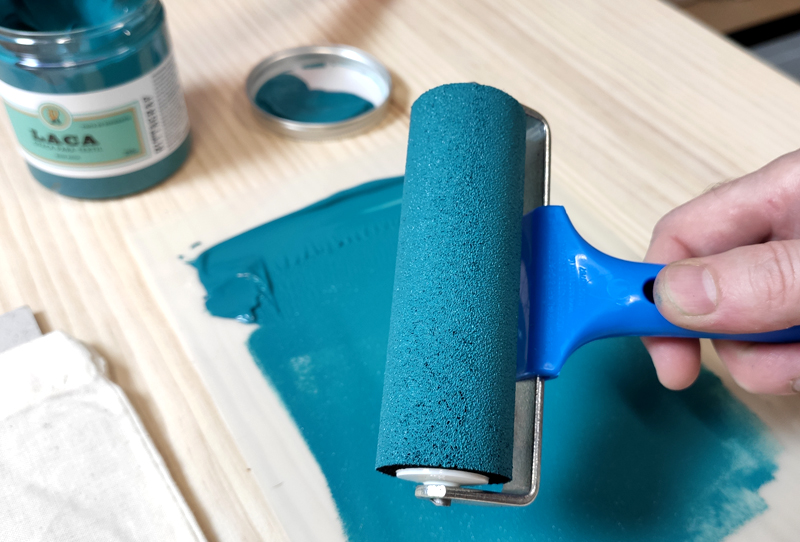

Step 3: Apply the Ink to the Rubber Stamp
We will apply the ink to the stamp by making several passes in different directions, avoiding creating thick or roller lines. It's not necessary to apply pressure. The stamp should have a fresh ink layer to transfer the image well.
Water-based screen printing ink dries quite quickly, so it's important not to delay in the inking process. Ink drying can lead to unnecessary thickness and textures that will show up in the print.
As we mentioned earlier, each color and type of ink has a different flow and consistency. If the ink dries too quickly, we should clean the ink field and the roller, replacing and applying fresh ink. If necessary, we can thin the ink with a bit of water (preferably distilled) or even use a textile ink retarder. However, the ink shouldn't be overly fluid, as it could excessively slide and lose its pictorial properties. Both a cloth with water and a damp sponge will be sufficient to remove most of these impurities when cleaning the roller and ink field. Water-based screen printing ink cleaner is fantastic for cleaning this type of ink off our large stamps and super large custom stamps.
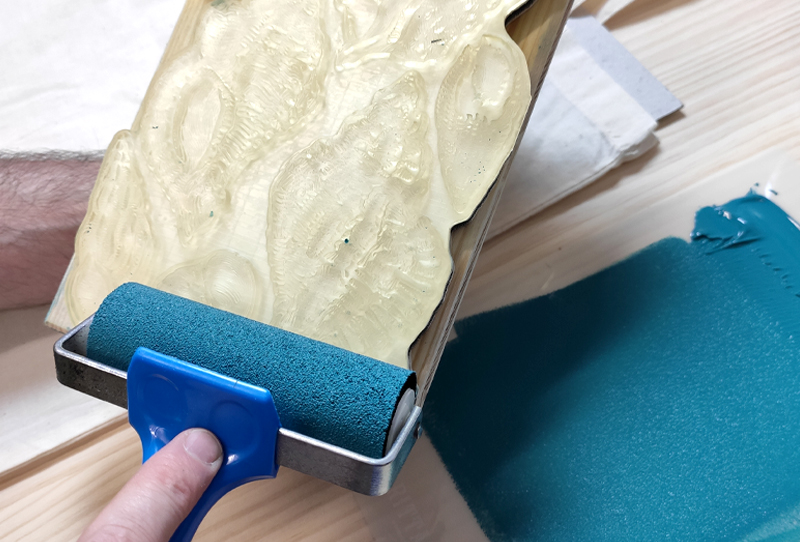

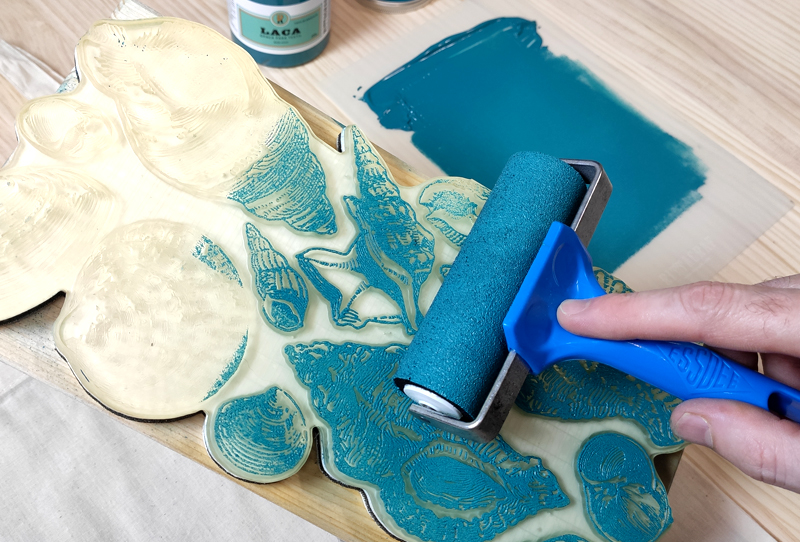

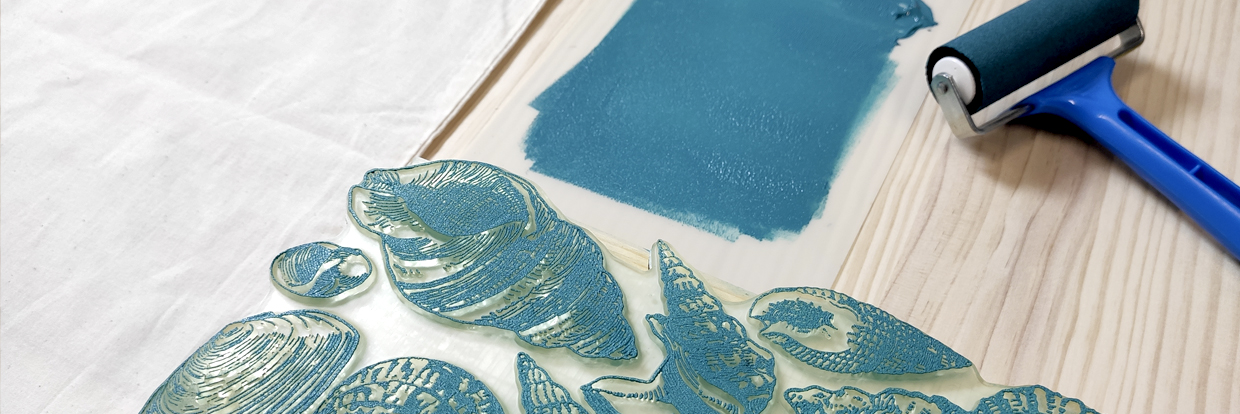

Step 4: Stamp the Stamp onto the Fabric
If we are going to print multiple stamps, we can use a textile adhesive spray (such as Takter 1000) to secure the fabric to a board, table, or flat surface. This way, we'll avoid wrinkles and enable multi-color registration if necessary.
Once the stamp is inked, we place it onto the fabric and apply pressure with one or both hands, ensuring that the pressure has been evenly distributed. To achieve a good stamp impression on fabric and obtain defined images, a proper ink transfer is necessary. If the stamp has the right characteristics, this is achieved through a perfect harmony between the type of fabric, the application of ink, and the appropriate pressure. With a little practice, we'll quickly understand the amount of ink and pressure required for stamping.
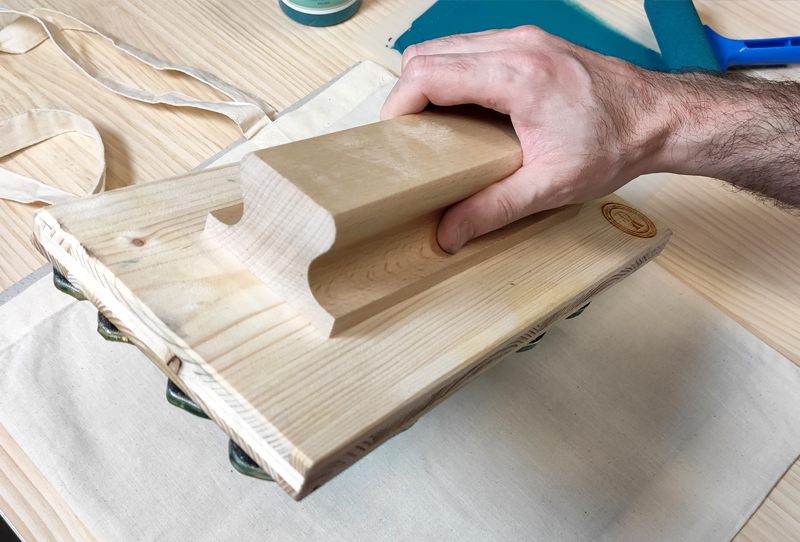

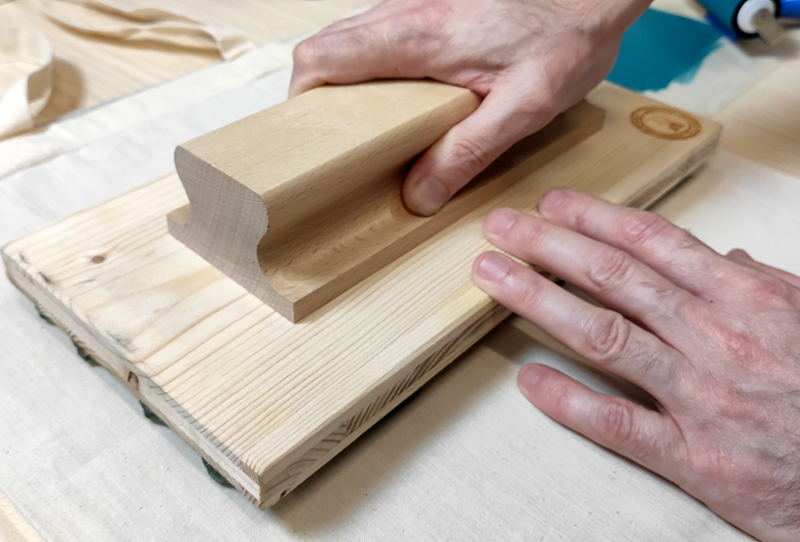

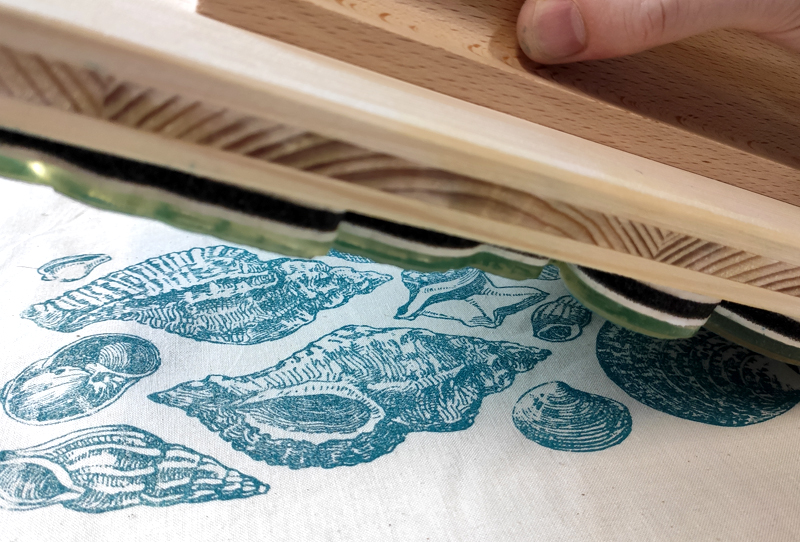

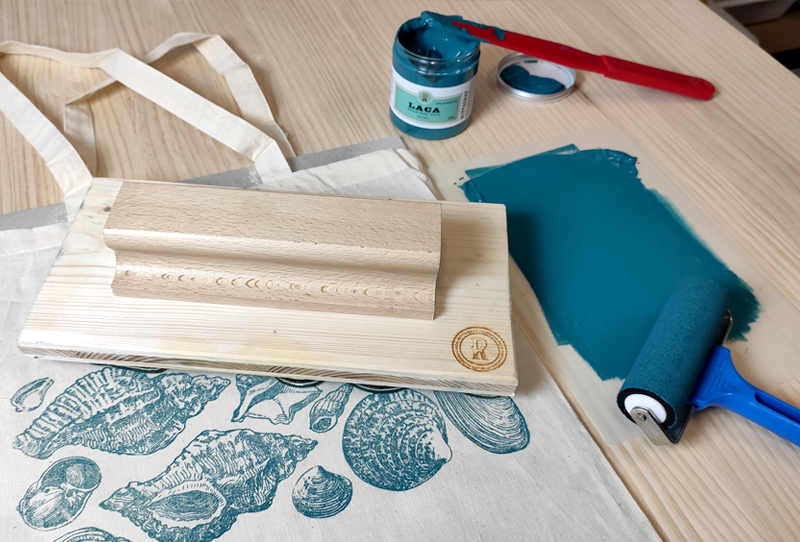

Step 5: Cure and Set the Eco-Friendly Screen Printing Ink on the Fabric
Once finished stamping the fabric, we should allow it to air dry. A lacquer (opaque screen printing ink) ink can take between 10 to 20 minutes to dry, depending on environmental conditions and the amount of applied ink. An acramine ink may take slightly less time. Once it's dry to the touch, it's recommended to iron the garment to fully set the ink. If we don't have a heat press for sublimation or screen printing, a household iron can be used. The result will be just as durable as if it were done with screen printing, although the amount of ink will be less and the thickness less consistent.
Step 6: Clean the Stamp
We recommend thoroughly cleaning the roller and tools with hot water and soap once the stamping is completed. As mentioned earlier, screen printing ink cleaning soap and a bristle brush can be of great assistance.
Advantages of Using Textile Screen Printing Inks
We are often asked about the convenience of stamping with textile screen printing inks. Despite these inks not seeming ideal due to their acrylic composition, we have found that they offer countless advantages when used with stamps in our printing projects.
Their fast drying is undoubtedly their most notable drawback. When the ink dries, it forms a plastic layer on the surface and obstructs the grooves of the stamp. If these grooves are very fine, the image might get blurred, and fine details or lines could be lost, requiring constant cleaning.
Here, we highlight some key advantages of using textile screen printing inks to stamp rubber stamps:
- Wide range of colors.
- Mixable with each other. They blend easily to achieve new colors.
- Eco-friendly inks.
- Option of opaque inks (lacquers) and transparent inks (acramines).
- High resistance to washing.
- Tools and rollers are easily cleaned with water.
- Great versatility: you can utilize these inks for applying to textiles with other processes like screen printing, stenciling, templates, and even brush painting.
Remember that this tutorial is a basic guide, and experimentation is key to finding the technique and materials that best suit your needs and preferences. Have fun exploring fabric printing and discover your own resources for your work!
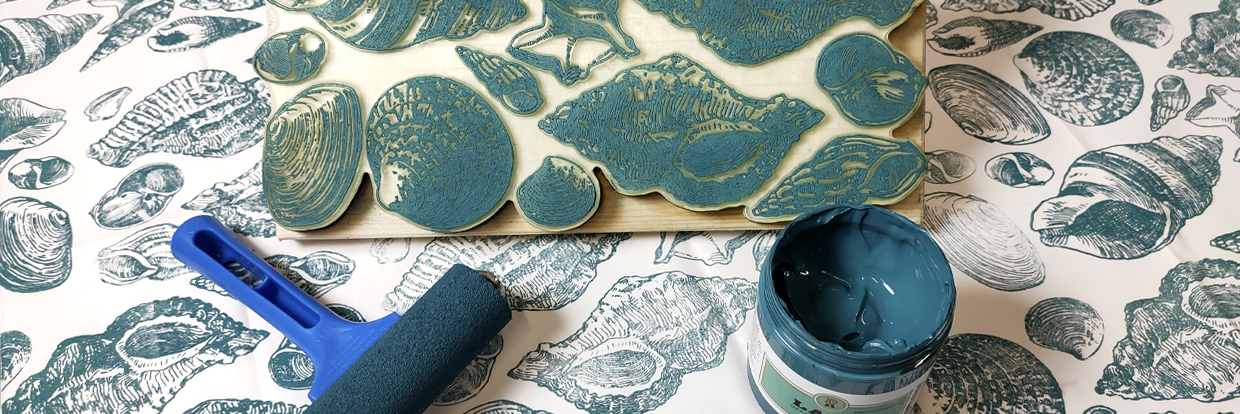

Recommendations for Using Textile Screen Printing Inks with Stamps
- Use lacquers if you want to achieve a solid finish.
- Use acramines if you want a smooth touch result, where the print is nearly imperceptible.
- Excessive ink can blur the print. It's better to apply multiple layers of ink rather than a thick layer.
- A soft rubber stamp will stamp more easily than one made with a hard material. That's why our textile stamps are created with soft and easy-to-print materials. Even big stamps or super large stamps print with great ease.
- Excess ink or excessive pressure can blur the result. If the recesses of the stamp get dirty with ink, you'll need to clean the stamp.
- Not all fabrics pick up ink the same way. Some fabrics are easier and more attractive.
- Conduct print tests before making a final edition. Try applying more or less pressure and more or less ink.
- Once you finish printing, collect the ink you can reuse. If it's still in good condition, you can reuse it. So, store it in the same container or in a new container that can be sealed, if you've done color mixing.
- Remember to wear clothing that you don't mind getting stained. Keep in mind that the screen printing inks we use are permanent on textile surfaces.
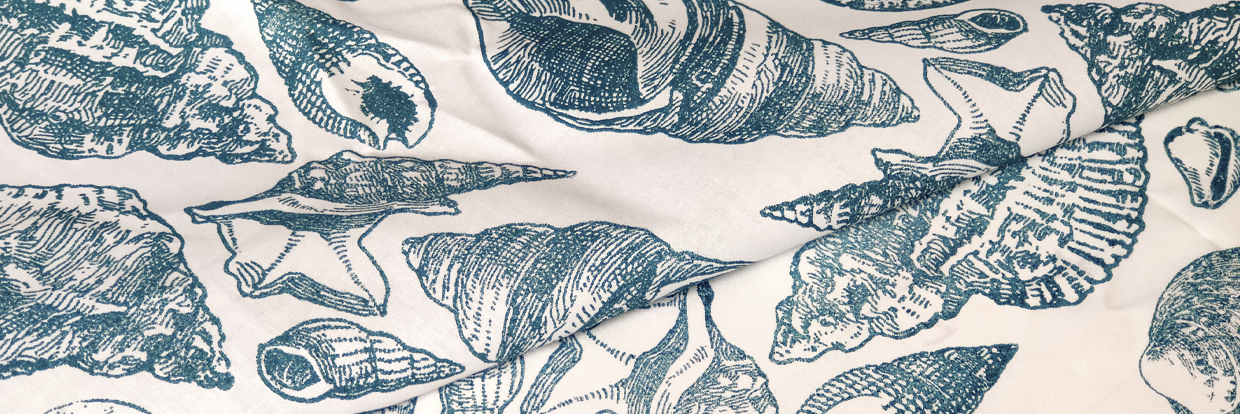

Discover Our Custom Stamp Service
If you're interested in delving even further into the world of screen printing and custom stamps, at Rittagraf, we provide a wide range of options for custom rubber and photopolymer stamps, as well as urgent manufacturing services for projects that require a quick turnaround time. We are experts and pioneers in the production of big and large custom stamps and photographic stamps. Our expertise and passion for stamps make us your best choice to bring your ideas to reality.
Don't hesitate to visit our website and discover all that we have to offer!

